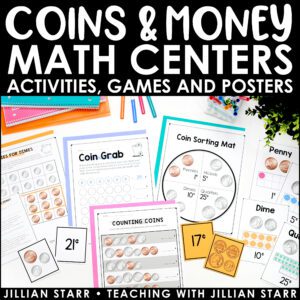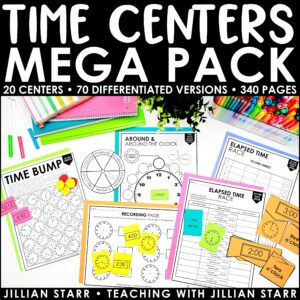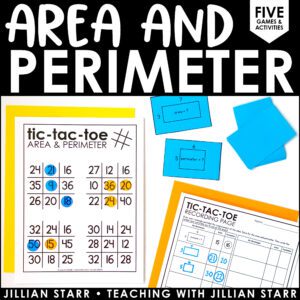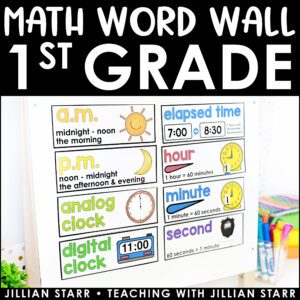
How can we make coin counting click with the bigger picture in 1st and 2nd grade? Easy – connect it to the hundred chart! Today, let’s dig into how to get kids counting coins on a hundred chart to make the connection between counting coins and place value.
Counting coins is among the most practical math skills we teach students in elementary school. If you’re anything like me, you use a debit or credit card way more than cash, but when we do pull out a dollar bill or two, we want to make sure we aren’t overpaying or being shortchanged. Enter: counting coin lessons.
Being able to count coins is deceptively simple. You just count them and move on, right? Not so fast. When counting coins, we need to do a ton of things just to get to that total:
- Identify the coins and their values
- Count or skip count by 1s, 5s, 10s, or 25s
- Count on
- Add multi-digit numbers
- Keep track of the coins already counted and those that still need to be counted
For kids, that is hefty to do list, especially because just identifying the coins can be an obstacle in itself. If you’re anything like me, you already have coin posters ready to hang for students to reference and personal coin banks at the ready (check out the link for FREE student coin bank labels!) for students to use when counting. You might even have a stash of centers games prepped for practice.
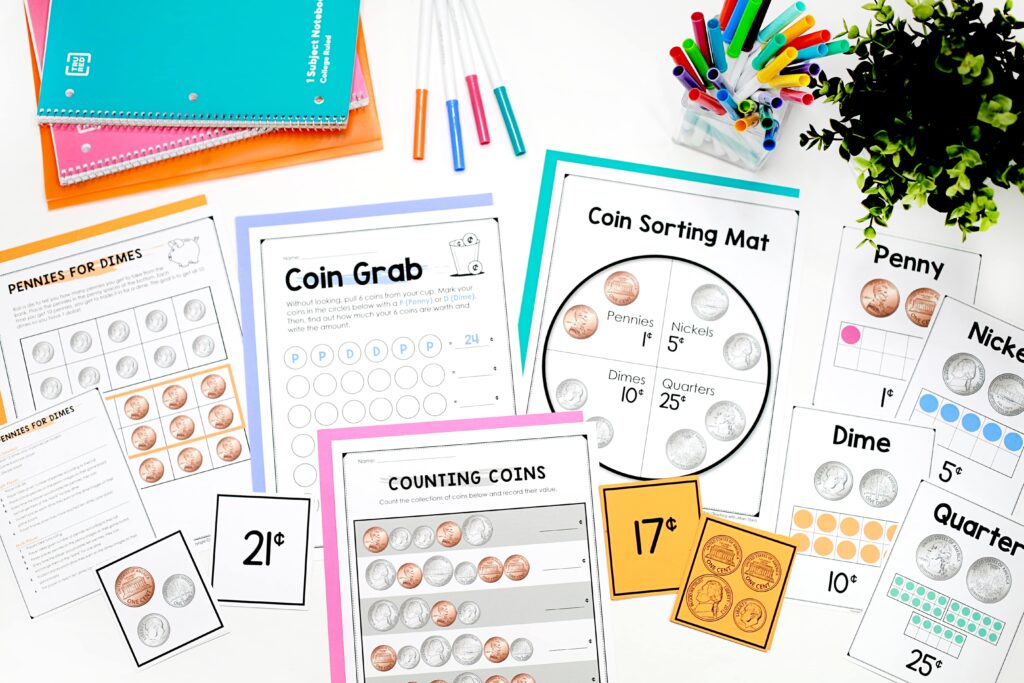
But even with all these resources, kids might still hit roadblocks. So, let’s dive into instruction and see how we help kids grasp this abstract concept by counting coins on a hundred chart.
Step 1: Introduce the Hundred Chart
The Hundred Chart – one of the most versatile math materials out there! Our trusty hundred chart is usually a lovely blue pocket chart with cards for the numbers 1 through 100 . The cards are usually two-sided with one side having a white background and the other side having a colored background. Lower elementary teachers use these for a zillion things like counting, skip counting, adding and subtracting multiples of tens, number recognition, and the list goes on and on.
One of my favorite ways to introduce the hundred chart comes in handy when we begin to move into counting coins on the hundred chart. Early on when students are learning about the hundred chart, I like to use Unifix cubes to transition between a number path format to a hundred chart.
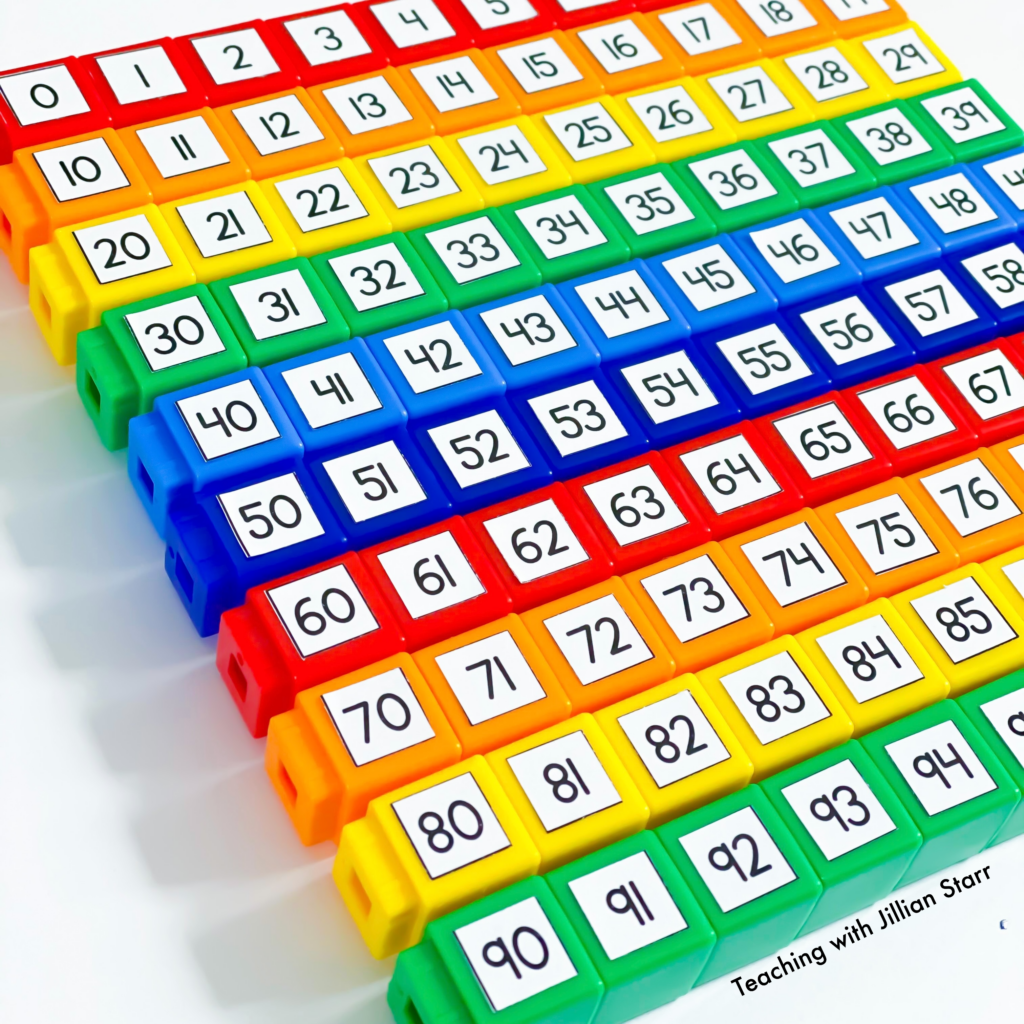
Connecting the abstract numerical representations of numbers to concrete representations using Unifix cubes can be a game changer! Students can visualize the value of numbers and begin to internalize what value really means. 64 is a lot more cubes than just 6 or 4 cubes! Spoiler alert: this connection to value will come back later…
Step 2: Connect Coin Values to Linking Cubes
Coins may be tangible but are definitely not real math manipulatives. They’re actually really abstract! Have you been to another country and tried to use their currency? Did you just immediately remember what the coins and bills represented? I remember traveling years ago and constantly having to look at the coins I had to see what they were worth. I just couldn’t keep them straight. That’s because we are assigning seemingly arbitrary values to little metal discs that are similar sizes, colors, and designs. When we think about it this way…no wonder kids often struggle with remembering coin values!
So how do we make coins and their values more meaningful? We bring in a tried and true strategy: forging connections to prior knowledge. By the time students begin learning about coin values, they have likely already worked on their understanding of tens and ones and the place value system. When doing so, they probably used linking cubes. Taking advantage of that prior learning, making the connection between coins to linking cubes can help students visualize what each coin is worth.

One of my favorite ways to accomplish this? Have students build the values of each coin and label it with the coin it represents. This visual also helps when beginning to add coins. Students can physically manipulate the cubes to add 25 and 5. This approach not only strengthens students’ understanding of coins and their values but also provides them with important practice with place value and addition. Win-win!
Step 3: Begin Counting Coins on a Hundred Chart
Let’s put it all together! Now that kids have a connection between linking cubes and the hundred chart, and coins to linking cubes, it’s much easier to make the connection between coins and the hundred chart. Basically, if a = b and b = c, then b = c… throwback to our algebra days, am I right? 🤓
Now that students have made all these wonderful connections between coins, linking cubes, and the hundred chart, so let’s take advantage of it by having them count coins on a hundred chart using linking cubes. Suppose you gave students the following coins and asked them to find the value of them:
1 quarter, 2 dimes, 1 nickel, and 3 pennies
Remember that students need to go through a few steps before beginning to find the value of the set of coins, but let’s say that using their resources, they now know the value of each coin. Now students have to add them up. Students can represent the value of those coins using their linking cubes and begin to combine them to find the total.
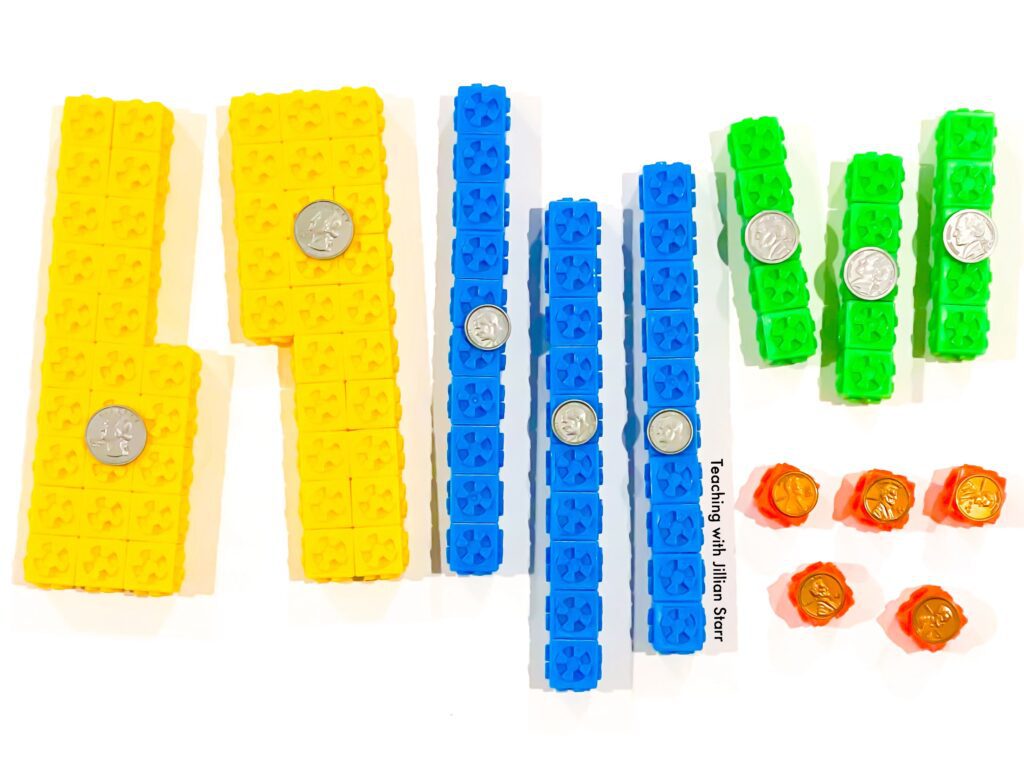
Students may be able to then skip count by 10s and 1s to determine the sum, but what if that’s challenging? Well, remember how we connected cubes to the hundred chart? They can go back to that, place the cubes on the hundred chart, and use that to help them find the sum.
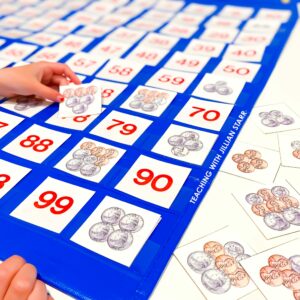
FREE Coin Hundred Chart Activity
Ready for the perfect coin-counting activity for early finishers? I’ve got you covered!
Using this approach, students can practice counting coins on a hundred chart using any combination of coins. Not only that, but students can then move on to selecting a value from the hundred chart and naming coins to make that value. Students can first build that number using linking cubes. Then, working backward, they can decompose that number into groups of 25, 10, 5, and/or 1. Using cubes as an intermediate step supports students’ understanding of the value of the coins as well as how they can be combined and broken apart.
Counting coins on a hundred chart might not be a commonly used strategy but bridging the gap between coins and place value will pay off (pun intended) in the long run. Do you have any other ways to make the connection between place value and coins? Drop your ideas below!

